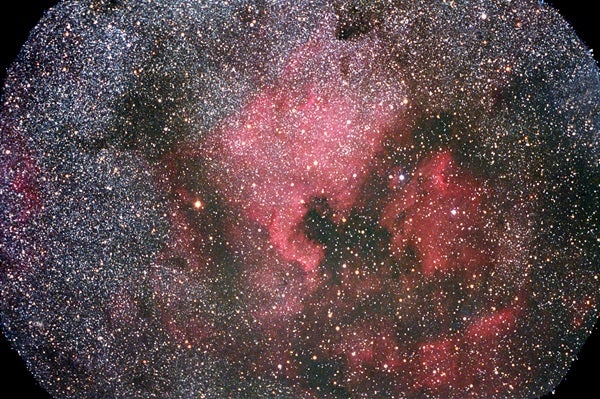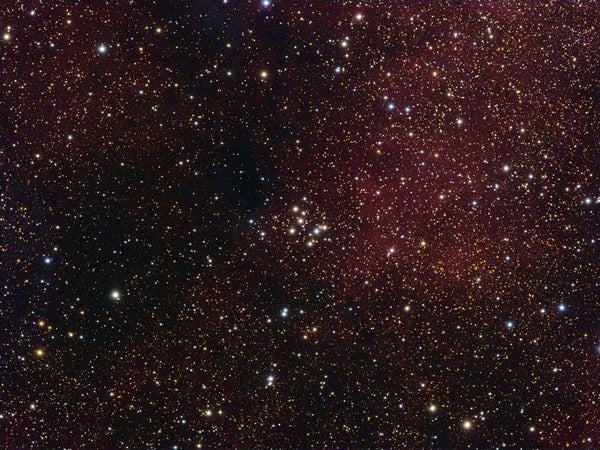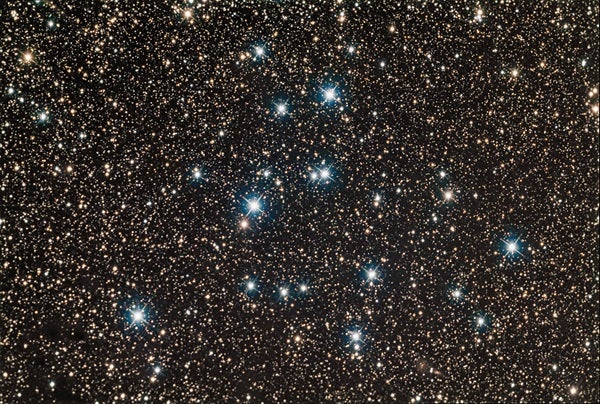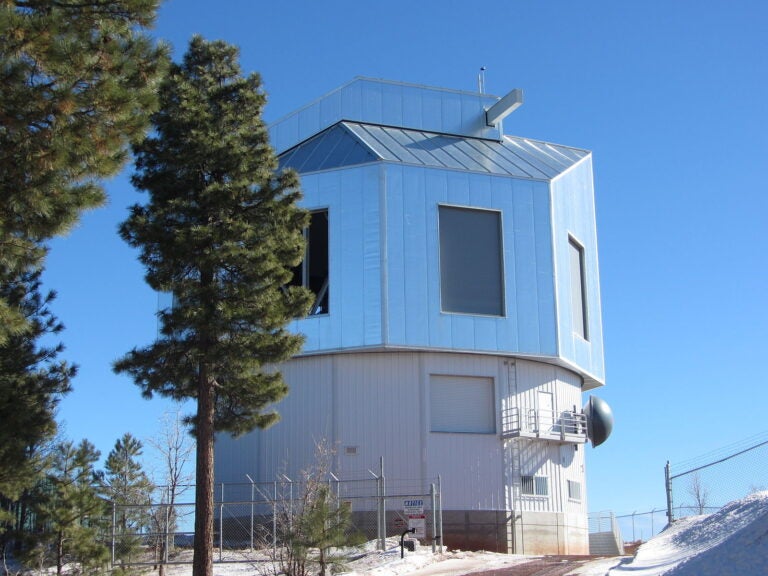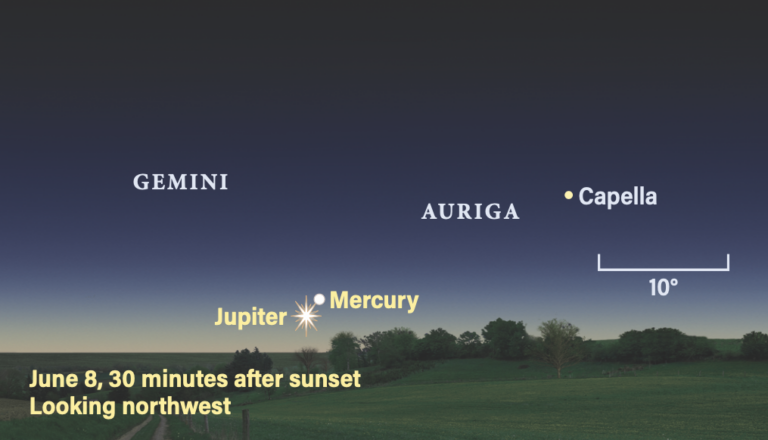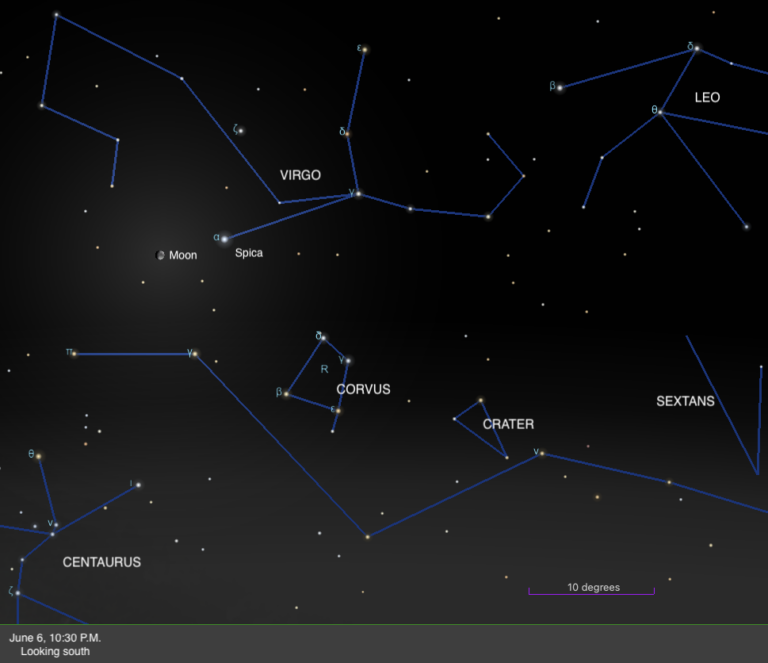Cygnus the Swan flies high in the western sky during the early evening hours this month. The Milky Way is especially bright in this area of the sky, often defying the choking grip that light pollution has on suburban skies. Many striking binocular targets are nestled in its gentle glow.
Let’s begin at the crux of the Swan, the star Sadr. The name “Sadr” comes from the Arabic word for “chest,” which describes its position within the celestial swan perfectly.
Also known as Gamma (γ) Cygni, Sadr is an ideal jumping-off point for our first target, open cluster M29. M29 floats a little less than 2° to the star’s south-southeast. Charles Messier was first to lay eyes on it back in July 1764, when he described it as “a cluster of seven or eight very small stars . . . which one sees . . . in the form of a nebula.” Through my 10x50s, M29 does indeed look like a tiny, rectangular nebula of grayish light. Moving up to my 16×70 giant binoculars resolves those stars Messier mentioned. They form a small dipper-shaped pattern that some liken to the Pleiades. Four of the cluster’s brightest members create a rectangular bowl, while a fifth can be imagined as a stubby handle.
Cygnus holds many objects that put our eyes and our binoculars to the test. One of my favorites is the North America Nebula, NGC 7000. The North America Nebula is a large expanse of glowing hydrogen gas mixed with opaque clouds of cosmic dust just 3° east of Deneb and 1° to the west of 4th-magnitude Xi (ξ) Cygni.
This celestial continent spans 2°, or four times the width of the Full Moon. This makes it too large to easily see through conventional telescopes. But the wide fields of our binoculars make them perfect for the task. In his classic work Burnham’s Celestial Handbook, author Robert Burnham Jr. advised, “Binoculars show an irregular glow more than 1½° in diameter with the North American shape becoming unmistakable on a clear night.” The nebula is so bright that under a very dark sky you can see it with naked eyes alone.
I’d love to hear about your favorite binocular objects and feature your observations in future columns. Please send your suggestions to me at binophil@outlook.com.
Until next month, remember that two eyes are better than one.


